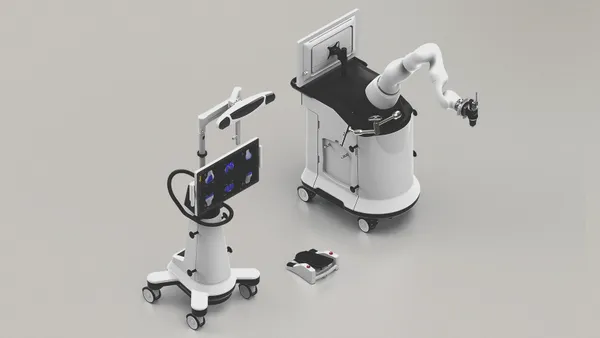Dive Brief:
-
FDA has proposed changes to its guidance on the development of medical devices used to treat benign prostatic hyperplasia, (BPH) including changes to trial design and other aspects of preclinical and clinical development.
-
In a draft issued Tuesday, FDA outlined plans to change its position on primary endpoints in BPH device trials, for example by recommending a 30% or greater improvement on a symptom score, among other proposals.
- The update is relevant to startups such as Butterfly Medical, MedeonBio, Urotronic and Zenflow that are developing devices to challenge BPH market incumbents like Boston Scientific and Teleflex.
Dive Insight:
The BPH device landscape has evolved quite a bit in the decade since FDA finalized guidance on developing medical devices to treat the condition in 2010. FDA granted De Novo authorization to NeoTract’s UroLift in 2013. NxThera got 510(k) clearance for Rezūm two years later. The early successes of the two devices led Teleflex to buy NeoTract for $725 million and Boston Scientific to pay $306 million for NxThera.
With UroLift driving 48% growth in interventional urology revenue at Teleflex in 2019, continuing the upward trend in recent years, other companies have identified the market as an opportunity. The guidance shared by FDA this week provides an updated roadmap to market for those companies.
If finalized, the guidance will affect how would-be rivals to Boston Scientific and Teleflex design BPH clinical trials and the evidence they need to generate. FDA plans to advise 30% as the minimum clinical improvement on a symptom scale and is advocating for a 12-month analysis of the primary efficacy endpoint. Higher-risk devices may have to clear a higher efficacy threshold.
None of those stipulations are present in the 2010 guidance, although key devices developed since then, notably Rezūm and UroLift, cleared the proposed efficacy threshold. At 12 months, NeoTract linked UroLift to a 49% improvement from baseline. NxThera linked Rezūm to a 51% improvement on a similar scale.
FDA is also proposing to change sections of the guidance on safety endpoints and inclusion/exclusion criteria. On the safety front, FDA wants to add worsening sexual dysfunction to the list of adverse events that investigators should routinely record. The effect on sexual function of different ways to treat BPH is a key battleground for Teleflex and its rivals.
The planned update to the inclusion/exclusion criteria covers the enrollment of patients with major comorbidities. Given the unknown risks posed by investigational devices, FDA wants patients with substantial comorbidities to generally be excluded from BPH clinical trials. However, sponsors may be able to include such vulnerable patients in their trials if they provide adequate justification, for example by explaining that a truncated procedure time may improve outcomes in the population.
FDA also wants to add four new device categories to the scope of the guidance: endoscopic electrosurgical unit (with or without accessories), implantable transprostatic tissue retractor system, fluid jet removal system, and embolic agents for treatment of benign prostatic hyperplasia.
FDA is accepting feedback on the proposed changes until Sept. 14.
Separately, FDA released a shorter, finalized guidance Tuesday on clinical investigations for prostate tissue ablation devices.












